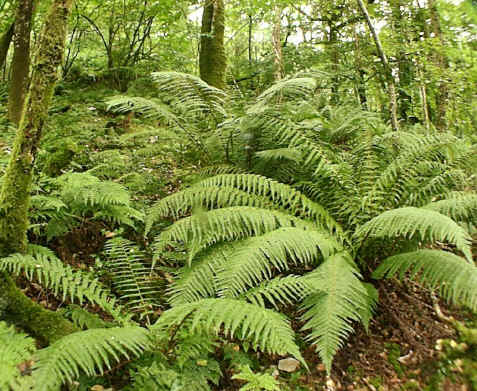The Wet Woodland Plant Survey
Survey Summary
|
| The following points are a summary of results from the
Wet Woodland Survey, conducted in the Wet Woodland at the Woodland Education Centre,
Honiton, East Devon, England. Six distinct areas were identified for survey
within the Wet Woodland. Each area was different in terms of soil, light, drainage
and moisture level. For full details of the Wet Woodland Plant Survey, follow the links which start at the bottom of this page. |
| 1. | All six areas are different from each other. Not
all of the areas are wet. Some are drier because of the slope of the ground and the
quality of the drainage.
|
| 2. | The Stony Area is the most diverse. (see
conclusions)
|
| 3. | The Cherry Area is the least diverse. (see
conclusions)
|
| 4. | No mature trees appeared in any randomly selected
quadrat, even though most of the wet woodland has a mature tree canopy.
|
| 5. | Of the 70 plant species identified in the Wet Woodland,
14 of them were mosses. At least one species of moss was present in the "top
three" of each area. This and the high number of moss species found across the
wet woodland indicate that it is very important for mosses.
|
| 6. | Young holly saplings appear throughout the Wet
Woodland, yet there are no mature holly trees. Holly berries are a favourite food
for many birds, it is likely that most of the young holly trees have been
"planted" by birds who eat the berries on trees outside of the Wet Woodland and
pass the seeds in their droppings whilst roosting in the Wet Woodland.
|
| 7. | Rhododendron ponticum is found throughout the Wet
Woodland area and is a dominant species in the Mound. Without control this species
would be a severe problem. It blocks light to other plant species making it
difficult for them to grow. It produces a build up of toxic leaf litter on the
ground which is detrimental to natural regeneration. Being an alien species it does
not form a valuable part of any natural habitat in Britain and is toxic to most animal
species.
|
| 8. | Polytrichum formosum has a highly significant
presence within both the Clearance and the Stony Area.
|
| 9. | The Bluebell Area is visibly dominated by Bluebells
during the spring and early summer. However at other times of the year ferns and
mosses will be the most dominant species.
|
| 10. | The most populous mature tree in each of the six areas
of the Wet Woodland is Silver Birch (Betula pendula). Willow was almost
entirely confined to the Seepage Area. 11 species of trees were found throughout the
Wet Woodland.
|
| 11. | Non-Native Cherry is a significant problem at ground
cover level within both the Cherry Area and the Stony Area. In the Cherry Area it
has already lowered the level of native plant diversity. Within the Stony Area it
represents a threat to the comparatively high level of plant diversity. Control of this species will be essential to prevent it having an increasingly detrimental effect on native plant life in the Wet Woodland.
|
| 12. | The Seepage Area is dominated by two species of rushes,
Bulbous Rush (Juncus bulbosus) and Soft Rush (Juncus effusus).
Both species are moisture loving and native to Britain.
|
| 13. | At least one species of sphagnum moss is present in the
Seepage Area.
|
| 14. | Two species of heather, Ling (Calluna vulgaris)
and Cross-Leaved Heath (Erica tetralix) are present within the Wet
Woodland. The Wet Woodland is adjacent to the Heathland Area, which under management
is returning naturally to flourishing lowland heath. It is likely that the Wet
Woodland was at one time wet lowland heath, before succession of trees took place,
returning it to woodland. Indeed, the pioneering tree species Silver Birch (Betula
pendula) makes up most of the mature tree population. Cross-Leaved Heath (Erica
tetralix) is characteristic of the wetter areas of heathland.
|
| 15. | A total of 70 plant species were identified within the Wet Woodland. 14 of these were mosses. There were also 7 species of ferns, 11 of trees, 7 of sedges and 5 of rushes. Lichens were not included in the survey but were present throughout the Wet Woodland. |
Continue to Main Survey Method
